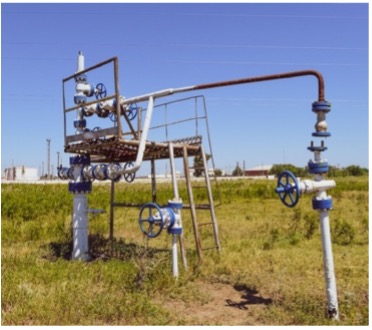Midstream Oil and Gas
Class VI Carbon Sequestration Wells – What Are They?
July 26, 2022 Welcome

Limiting carbon-based emissions released into the atmosphere is a major way of improving the natural environment and reversing some of the harmful effects of climate change. A great way to facilitate this environment-friendly change is using CCUS technology. A key element in CCUS are class VI carbon sequestration wells.
The Purpose of Injection Wells
Injection wells are driven, bored, or drilled shafts that introduce various fluids into underground geological formations for different purposes. Some primary uses of injection wells include:
- Mining
- Enhanced oil recovery where gases are introduced into oil reservoirs with dwindling pressures to boost output
- Carbon capture and storage
- Waste disposal
- Brine disposal/prevention of saltwater intrusion
According to the Environmental Protection Agency (EPA), injection wells are categorized into the six classes below.
- Class I wells used to dispose of municipal and industrial wastes
- Class II wells for oil and gas production activities
- Class III wells for dissolution and extraction of minerals
- Class IV wells for the disposal of hazardous and radioactive wastes
- Class V wells for the safe disposal of non-hazardous fluids underground
- Class VI geologic sequestration wells for the safe storage of carbon dioxide

Class VI Wells & Geologic Sequestration: An Overview
Class VI injection wells introduce carbon dioxide into natural geological formations for storage. This carbon sequestration technique aims to mitigate the harmful effects of carbon gas emissions on the natural environment. Class VI wells are also uniquely designed to protect underground sources of drinking water from contamination.
Class VI Well Requirements
There are strict criteria laid out by the EPA for developing Class VI wells. These requirements include:
- Extensive site characterization requirements
- Construction requirements for materials compatible with carbon dioxide (CO2) gas flow and can withstand contact with it over the life of a (geologic sequestration) GS project
- Comprehensive monitoring requirements that address all aspects of well integrity, CO2 injection and storage, and groundwater quality during the injection and post-injection site care period
- Injection well operation requirements
- Financial responsibility requirements assuring the availability of funds for the life of a GS project (including post-injection site care and emergency response)
- Reporting and recordkeeping requirements that provide project-specific information to continually evaluate Class VI operations and confirm underground sources of drinking water (USDW) protection
Class VI Permitting Stages
The permitting process for Class VI injection wells is divided into four stages:
- Pre-construction stageincludes site characterization, AOR modeling, injection testing, and permit writing
- Pre-injection stagefor finalization of site characterization, AOR status checks, and operation authorization
- Injection stagewhere operating data is analyzed, project updates are implemented, and permit modification is completed
- Post-injection stagewhere activities include injection well plugging, post-injection site monitoring, safety assurance/non-endangerment demonstrations, and site closure
Class VI Permit Application Process
The review process for all applications submitted for the construction of Class VI sequestration wells is outlined below:
- Assessment of application by the permitting team who reviews the completeness of the application materials
- Technical review and decision-making on a permit application
- Finalization of permit with permit drafting, public hearings and commentary, and issuance of final permit to construct Class VI injection wells
What’s The Future Look Like for Geologic Carbon Sequestration?
With a massive global drive to cut carbon emissions and reverse negative climate trends, geologic carbon sequestration is poised to take on an even greater role in climate control.
Carbon sequestration technologies, including Class VI injection wells, provide a safe long-term storage solution for carbon dioxide. Compliance with EPA regulations on the construction and operation of these injection wells will continue to offer a viable means of limiting carbon emissions while protecting underground drinking water sources.
Contact IFS for More Information Carbon Capture, Utilization and storage
At IFS, we provide high-quality solutions to players across various industries, including renewable energy, oil and gas, power, and air quality. Our state-of-the-art liquid and gas process systems are engineered according to the unique requirements of our partners.
If you want to learn more about what IFS can do to help with your CCUS project, our team of experts can provide you with all the required information. Contact us now.
